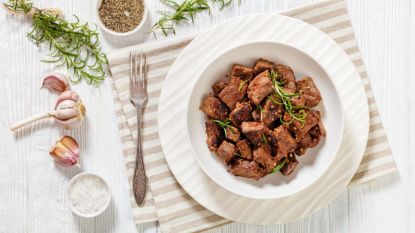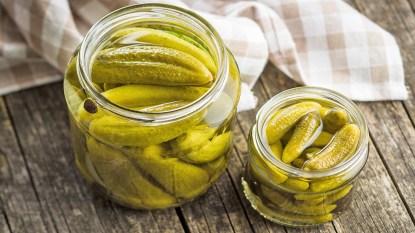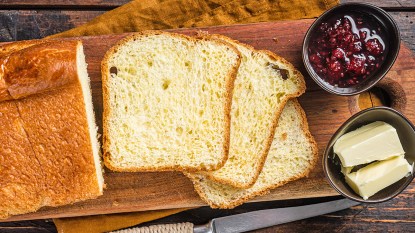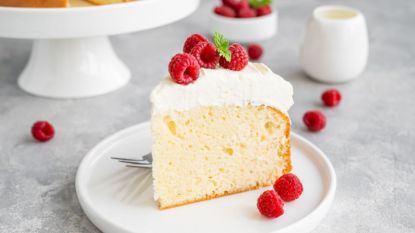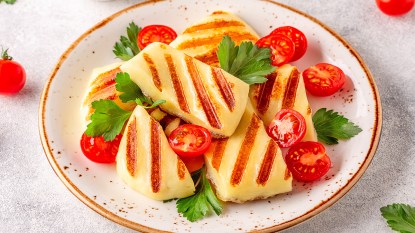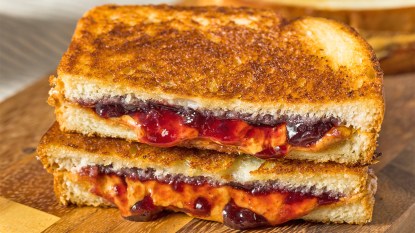Your Dried Herbs & Spices *Do* Expire — Here’s How To Tell When To Toss Them
Plus, how to store them so they stay fresh longer!
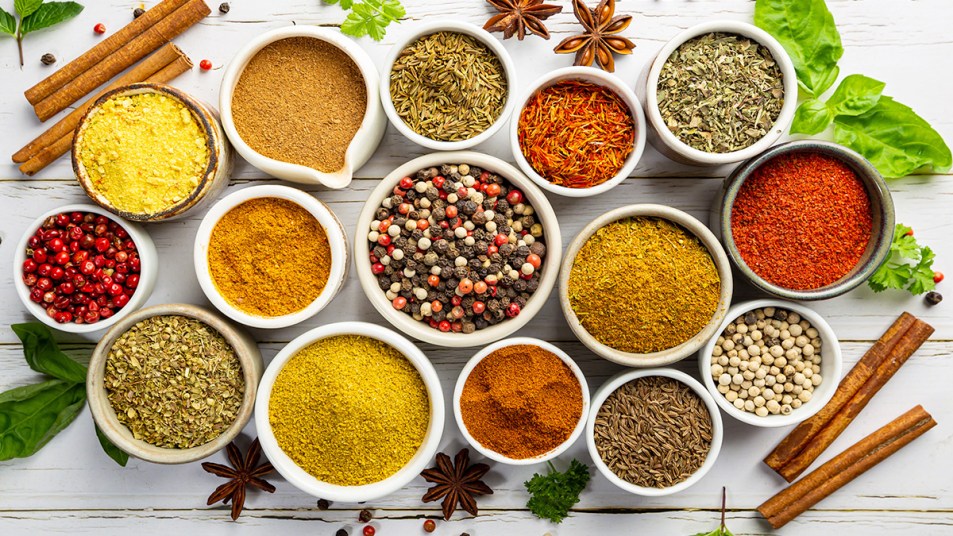
Preparing flavorful meals isn’t possible without herbs and spices. Whether you’re sprinkling dried oregano in tomato sauce or ground cinnamon over sweet potatoes, seasonings are the backbone of every dish. It’s easy, though, to lose track of each seasoning’s freshness — you probably use them as needed and stash them away without thinking. But, contrary to popular belief, seasoning does expire. Keep reading for everything you need to know about when to toss them.
The benefits of cooking with dried herbs and spices
Your staple seasonings like oregano, cinnamon and black pepper not only flavor up dishes, they also contain natural compounds that are associated with having various benefits including the ability to aid blood pressure control. In fact, a 2021 study found that adults who consumed almost 7 grams of spices every day for a month experienced the greatest reduction in their blood pressure levels compared to participants who consumed less. Researchers believe that seasonings played a part in decreasing levels of “bad” LDL cholesterol. (For more on the benefits of seasonings, click through to our story on herbs for high blood pressure and healthy holiday spices.)
If you can use use spices after they’ve expired
Good news: Cooking with expired seasonings won’t make you sick — but it will leave your food tasting bland. Exposure to direct light, humidity and/or oxygen eventually causes dried spices to lose their essential oils, which means they’ll also lose their vibrant flavor and color. You can toast (or “bloom”) whole spices in a dry pan and ground seasonings in oil to liven up the taste; however, this method is best reserved as a last resort if you can’t replace old seasonings with fresh ones. (Click through to learn how to bloom spices to wake up their fragrant and aromatic flavors.)
How to know if spices have gone bad
If you pour seasonings into separate storage containers, you may forget the expiration date because it’s no longer written on the bottle. Also, old dried herbs and spices don’t appear moldy the way milk or bread does. So, in order to tell if they’re too old to use, you need to take a good look and whiff of the spice to determine its freshness. This guide from OurEverydayLife.com is useful for detecting whether your seasonings have expired.
1. Color
A bright, crisp color is an indication that the spices are still fresh. By contrast, a dull color is a sign that the seasoning is bad. A dried herb like parsley starts out green and may turn brown with air exposure. If you notice apparent color changes, discard the spices.
2. Texture
Moisture entering the spice’s container causes clumping and will make the seasonings lose their essential oils. This happens when you constantly shake the spice bottle over a steaming pan or store it near the stove. Clumping affects powdered spices more than loose dried herbs, so replace them if you spot this texture change.
3. Smell
All seasonings have their own distinct aroma, which fades over time. Seeing if dried spices or herbs still have a powerful scent helps determine if they’ll add a lot of flavor to your food. Simply rub a pinch of this seasoning between your fingers, and take a sniff. A weak scent is a clear sign that the spice is past its prime.
Related: Scale Back on Sodium Without Sacrificing Flavor? Yes! What Experts Want You To Know About Green Salt
When you should throw out spices
If you keep spices in their original bottles, you can refer to the expiration date. However, they can actually last longer when stored correctly. Here are general guidelines for the shelf life of seasonings, according to the experts at McCormick:
- Whole spices (fennel seeds and peppercorns): 3 to 4 years
- Ground spices (cinnamon, cumin, ginger and paprika): 2 to 4 years
- Ground and whole leafy herbs (oregano, thyme, sage and seasoning blends): 1 to 3 years
- Additional pantry staples (vanilla extract and salt): Indefinitely (other extracts, such as lemon or almond varieties, may fade after 2 to 3 years)
One thing you should also check for: whether the spice in question may contain unhealthy levels of heavy metals. In an investigation conducted by Consumer Reports, researchers examined 15 dried herbs and spices: basil, black pepper, chili powder, coriander, cumin, curry powder, garlic powder, ginger, oregano, paprika, saffron, sesame seed, thyme, turmeric and white pepper. And five of the 126 products tested had amounts of heavy metals that were of “moderate concern” or “high concern.” These products were in the basil, oregano, thyme and turmeric categories. Click through to learn more about which brands had high levels of heavy metals and which spice brands were free of heavy metals.
What to do with old spices
Discarding semi-filled spice bottles may feel like you’re throwing away money. Although old seasonings are too dull to cook with, you can reuse them around your home and garden. A few suggestions from Mountain Rose Herbs include using herbs and spices to make a stovetop potpourri, soap, scented candles or even DIY fire starters. For natural pest control, adding cayenne pepper or chili powder to soil prevents bunnies and deer from nibbling away at your garden.
How to you store spices in your pantry
Storing seasonings correctly ensures that they’ll stay fresh as long as possible. The best way to do this is by protecting them from direct light and humidity. So, keep dried herbs and spices in a cool, dry place such as a cabinet or drawer. Whether you keep spices in their original bottle or not, be sure to tightly close the container between uses to avoid excess air exposure.
2 delicious spiced dishes
Thanks to these tips, refreshing your spice rack or cabinet should be easy. Afterwards, you can use those fresh seasonings to whip up these recipes — which are bursting with warming and fragrant spices!
Mexican Chili Soup
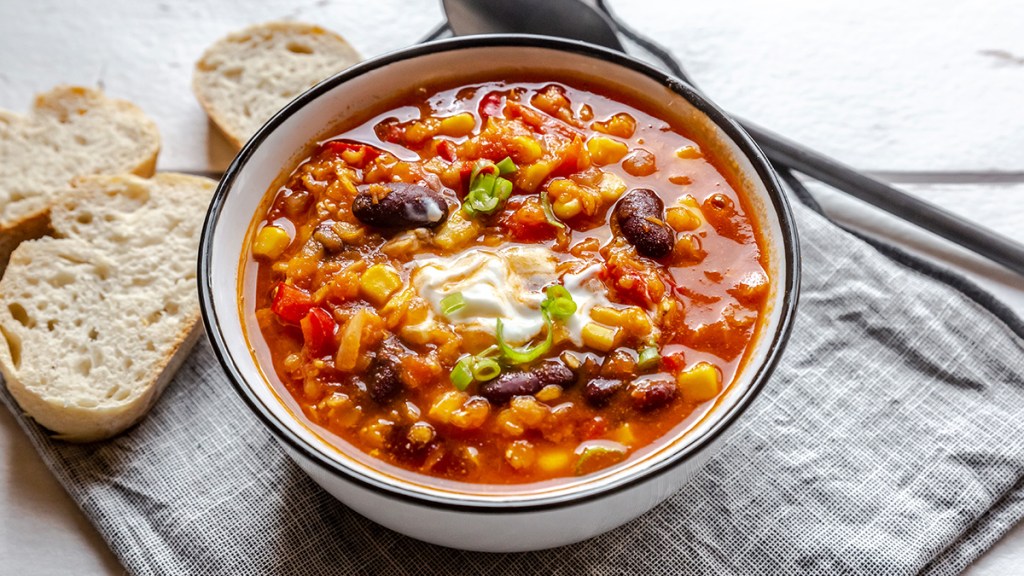
Fiber-rich hominy is the secret in our set-it-and-forget-it main — chickpeas would work just as well.
Ingredients:
- 1 (14.5 oz.) can lower-sodium beef broth
- 1 (10 oz.) can diced tomatoes with mild green chilies
- 2 Tbs. tomato paste
- 2 carrots, chopped
- 1 onion, chopped
- 2 cloves garlic, minced
- 1 bay leaf
- 1 tsp. ground cumin
- 1 (15.5 oz.) can mixed chili beans
- 1 (15 oz.) can white hominy, drained
- Cilantro leaves and sour cream (optional)
Directions:
- Active: 15 mins
- Total time: 6 hrs, 15 mins
- Yield: 4 servings
- In 4-quart slow cooker, stir together beef broth, diced tomatoes with chilis and tomato paste until paste dissolves; stir in carrots, onion, garlic, bay leaf and cumin. Cover; cook on low until vegetables are tender, about 5 hours.
- Stir beans with their liquid and hominy into soup in slow cooker. Cook on low until heated through and flavors blend, about 1 hour. If desired, garnish with cilantro leaves and dollop with a little sour cream just before serving.
Apple Ginger Tart
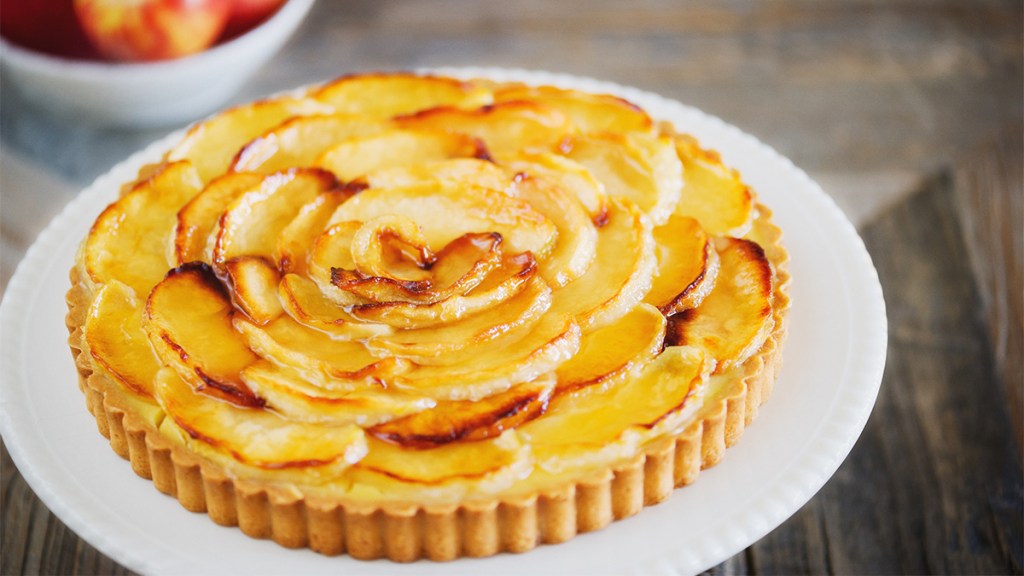
Golden Delicious apples really shine when layered with luscious apple butter and sprinkled with a zesty ginger-sugar mixture.
Ingredients:
- 2 tsp. sugar
- ½ tsp. ground ginger
- ½ of (11 oz.) package piecrust mix
- ¼ cup apple butter
- 4 golden delicious apples, peeled, cored, cut in ⅓-inch-thick slices
- 2 Tbs. unsalted butter, melted
Directions:
- Active: 30 mins
- Total time: 3½ hrs
- Yield: 8 servings
- Place baking sheet on lower rack in oven. Heat oven to 425°F. Coat 10-inch fluted pie pan with cooking spray. Combine sugar and ginger. Prepare piecrust mix for 1 crust. On floured surface, roll out dough to 12-inch round; transfer to pie pan. Fold dough under along edge.
- Spread apple butter on crust bottom; add single layer of apples. Sprinkle with half of sugar mixture. Repeat layering once. Brush with butter. Bake on baking sheet 40 to 45 minutes. Let cool.
Click through to learn how to make your own flavor add-ins:
Texas Roadhouse Steak Seasoning: Make It At Home To Enjoy Big Flavor for Less Money
Everything Bagel Seasoning Is Everywhere — Here’s What To Do With It and How To Make It Yourself
What Is Green Salt? A Guide to the Low-Sodium Table Salt Alternative


